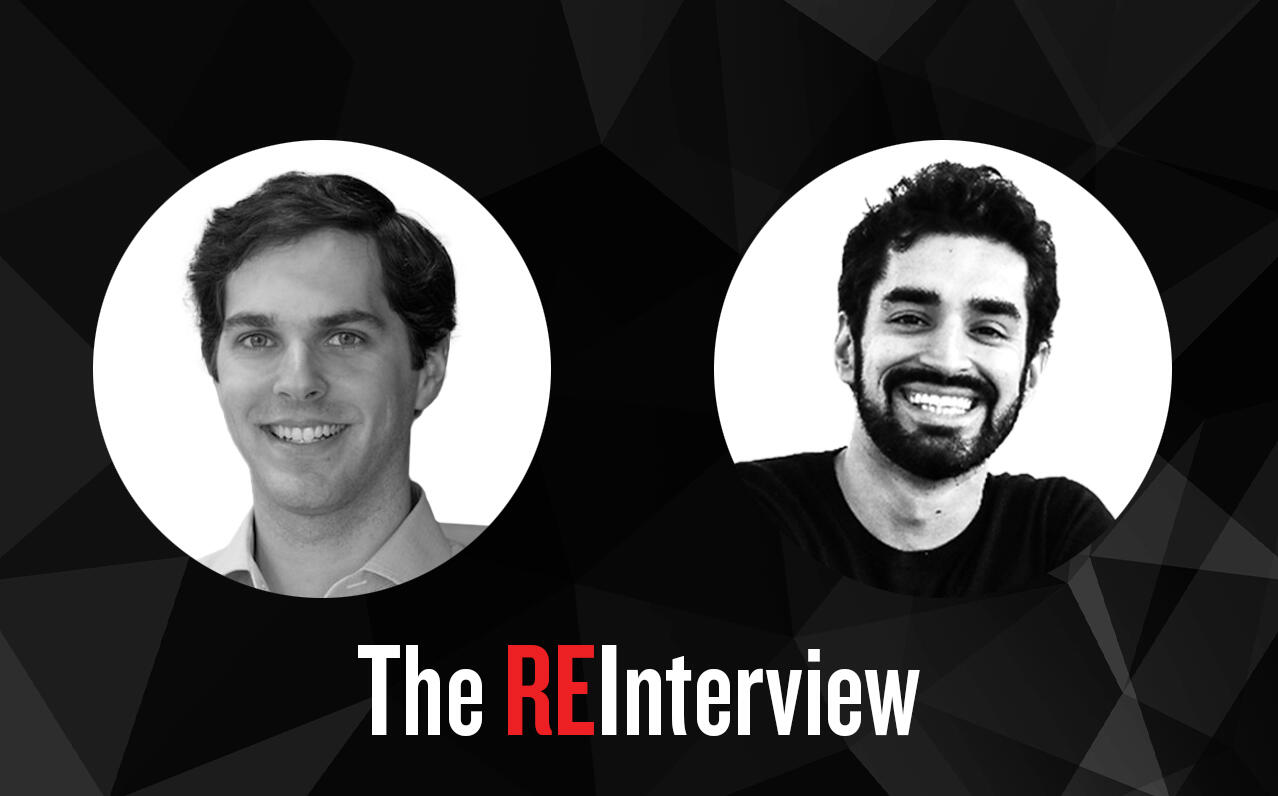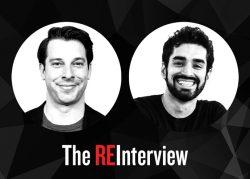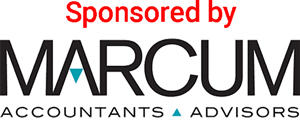
Trending
Proptech hits puberty: Insights from Camber Creek’s Casey Berman
Real estate–focused VC dishes on long-term bets and ecosystem plays

Total addressable market, or TAM, is a metric investors use to figure out whether a sector is worth their trouble. With a tiny TAM, even a home-run investment in a startup may not generate the return investors crave. Target a big TAM, however, and things get a lot more interesting.
A key reason proptech is hot is that investors believe the TAM to be gargantuan. An industry that permeates all aspects of our lives and happens to be a tech laggard? Sign us up!
A decade ago, however, that perception could not have been more different, according to Casey Berman. Less than $100 million flowed into proptech in 2011, said Berman, who started his real estate–focused venture capital firm, Camber Creek, that year.
“I joke that we saw every deal, and in hindsight, to see every single deal when it’s only $100 million wasn’t that hard. Today, there’s over $15 billion invested the past three years, and we expect that to continue to grow.”
“People in the real estate space didn’t even know how much opportunity there was for their core business,” Berman added. “Today, that’s changed dramatically, the market is just so much bigger. You could argue that it became addressable, while before it wasn’t educated enough to be addressed.”
Camber Creek has backed startups such as Latch, CompStak, VTS and Notarize. In October, it raised $155 million for its third real estate fund from backers such as the Texas Employees Retirement System.
The Real Deal caught up with Berman to discuss his firm’s investing thesis, proptech’s evolution, and how greater scrutiny of SPACs may change the landscape for real estate startups.
COVID has been a BC/AD point in proptech and also drawn a line between “nice to have” and “need to have” technologies.
Another way we’ve been thinking about it is the Great Extinction. With Covid, you could no longer be a dinosaur. You had to have this real estate tech–enabled experience for your consumer in almost every asset class. If in March of 2020 you wanted to do a tour of a residential or office space, it had to be digital. Are we going to revert back to how it was before?
In commercial real estate, what technologies now fall into the “need to have” bucket?
One of the things that has dramatically shifted across our entire industry is this recognition of environmental, social, and governance issues. Today, it is a requirement: From the institutions down to the sponsors and the real estate tech companies, every group needs to be both cognizant of their own company’s ESG footprint and that of the groups that they work with. We need to track it. And the second piece that we’ve seen a massive adoption in is benchmarking. One of our portfolio companies, Measurabl, is the leader in that space.
In real estate tech, inertia is the biggest barrier to adoption. Even with this new law [New York City’s Local Law 97, which caps building emissions], it’s a pain in the butt and it’s one more thing I have to do. If the actual tracking of that building is even easier on Measurabl and easier than having a person procure the supply contracts for those utilities, then they’re going to switch, because it’s easier than how they were doing their existing job and they can do a lot more.
Then that next step: You invest in a company where you can then procure power. First benchmark, then procure power. Actually do it differently, change your behavior.
I can benchmark across my entire portfolio and bring it to a higher level so that when I talk to a public pension or institution who has these very high requirements, I satisfy them. I can show them on a regular basis how strong I am relative to all the other potential sponsors in the market. So there’s this incredible wave of positive reinforcement happening with both the capital providers and the sponsors.
When you say positive reinforcement, you don’t just mean, “Hey, good job.” You mean something more tangible.
Money talks. This is a great example where institutions have an option to deploy into real estate sponsors. One tracks their ESG and the other one says, “Location, location, location. I don’t care about ESG.”
There has been a very long misconception and quite often, companies have used that incorrectly. What we have seen is if you actually track the energy consumption of a building, a building that uses less energy will be more valuable. A building run more efficiently, whether it be through the better consumption of utilities or more efficient purchase of utilities, is going to have higher value. You can extend that to the governance piece as well. The ones who are most technologically advanced, the ones who are most transparent with their governance are also the most efficient. And therefore can drive higher asset values with their underlying brick-and-mortar real estate.
I want to get a sense of how you deploy money. Let’s say you find a startup that does one thing extremely well — let’s call that a service bet. And then the other one, let’s call it a platform bet, where you bet on a startup that right now might do one thing, but you could see it become an operating system or an integrated platform with multiple services. How do you allocate your capital based on those distinctions?
I love that you are making the distinction. A lot of people just see real estate tech investing as just, “here’s money.” The way we view a niche company is it solves a very specific problem, quite often in a narrow asset class. So multifamily is a huge asset class, but narrow in the scheme of all real estate. And there are very specific problems that need to be solved for owners and operators.
A small portion of our portfolio is made up of companies that fall into that niche. The benefit we have with the niches is that we have this built-in massive network of customers. We can take a very small niche company, make it large, and then help it grow into a platform or be bought by a platform.
One of the most niche companies is PetScreening. They solve the service animal liability in the multifamily space. If you ask a potential resident, “Why do you need that service animal? What is your disability?” — that is cause for a lawsuit. It’s solved a very specific problem and a massive portion of our [limited partner] network can use it, which helped the company grow very quickly and it’s become one of the industry norms. So for us, a small portion of our portfolio is dedicated to these niche companies.
[On the other hand], a company called Latch this past fall launched its operating system, where through this one app, a resident can work with your thermostat, communicate with your landlord, give people access to your building. And as Latch integrates with more and more solutions, you can engage with your physical building more and more through this one app.
We view the Latch OS as Proptech 2.0. People don’t want eight different apps to do things in their apartment building. You go into your apartment app, you open your door, you mess with the lights or the thermostat. You want one experience.
Latch’s core service already crosses the highest trust barrier — letting someone into your apartment. Once you solve that, you’re going for lower-trust interactions, which is easier.
One of the things we look at with every company is, what is the engagement with the customer? Latch already had the highest engagement of any app in an apartment building with just the access control. Now to build these other solutions on top of that, it’s just all additive, then [Latch] becomes the focal point of the building.
Historically, it was just Yardi, MRI, Entrata and RealPage, because they had the accounting, because they had the rent payment. Those were your only options for your core resident or office tenant-landlord interaction. With Latch, it’s a whole new game. There’s this whole new opportunity to interact.
The next evolution would be Latch goes and talks to other providers and says, “How can we integrate you into this platform?”
We, the consumers, are so used to having what we want, not only where we want it, but when we want it. That is now being translated into real estate and Latch is a great example. We see this across every asset class, so when you stay at a hotel or you stay at a short-term rental apartment, you want a consistent experience and you want to book it on your phone.
Give me the dream scenario on the office front.
The perspective we take of the dream office is from the employee.
Historically, they had no say – the CEO picked the office space because it was where they wanted it to be. They locked in for five and 10 years and everybody else had to make do.
Today, the organizations that enable and empower their employees to have flexibility with how they work are going to be the best employers. They’re going to recruit the best talent. What that looks like through our eyes is, how do you empower your employee to work from home some days and to work in a co-working or a shared space another day?
Latch is going public through a SPAC with Tishman Speyer. SPACs have become a quicker exit for a lot of investors. But now there’s been some scrutiny from the SEC. They’re going to evaluate, for example, how warrants are looked at. They’re going to take a closer look at growth projections. How does that change things?
The SPAC landscape really created a new outlet at the growth and pre-IPO stage. Let’s back into your question with that, by adding a new outlet, by adding really increased liquidity, there’s a larger supply of capital. And the number of companies did not go up in line with how much SPAC capital there was. So what we’ve actually been seeing in the later stages is the increase in prices. That’s very similar to the increase in prices just in the overall public markets.
Read more from The REInterview


More scrutiny is a positive thing. And the reason is, there is a balanced amount of SPAC capital that is productive for the market. One of the things that we’ve been doing with our portfolio companies is making sure they have three pillars. They need to have incredibly strong governance in place so that when they are public, they can hold to the scrutiny of a publicly traded company.
Number two, they need a foundation of customers. Where we’ve seen SPACs fail is where their base of customers is not strong enough. They provide forward-looking statements that are too aggressive, and then after it is public, both the price and the company start to falter based on the faltering of these core customers.
The last piece is you need a [SPAC] sponsor that has a long-term vision that aligns with the company. And that is because the public markets are totally unforgiving and there needs to be a long-term plan.
With Latch, Tishman Speyer has been a leader in the real estate space, the real estate tech space, and even more precisely, in the operating system for a building space. And it has been around for generations. It is not the type of organization that in a very short time frame wants to capture some warrant.
With certain other sponsors and other SPACs, we are very concerned and almost want to make sure that it doesn’t hurt the overall industry. One of our bigger fears is just the overall SPAC market hurting specific companies that are doing exceptionally well.
Does your long-term strategy change based on the frenzy around SPACs?
“No” is the short answer. Our strategy has always been: Build great companies, period. Whether that means they go public through a SPAC, whether that means they get acquired by a strategic [company], or there’s a recap from private equity or an IPO. If you’ve built a great company that provides value to a massive network of real estate owners and operators, you have options.
Would you consider being a SPAC sponsor yourself?
In the wisdom of real estate, you don’t change a good thing. So right now we’re sticking to the core venture fund.
There was this movement two or three years ago with a lot of real estate owner-operators, very well capitalized and connected, moving to sort of play VC a little bit. That has died down.
To succeed you need professional investing. Side hustles, one-offs bets, don’t work. For us, everything is an investment and we run companies through our beta lab. We actually try them out with our LPs. And not only one company, but we’ll try out a company and its three closest competitors.
And it’s that systematic approach. Not just like, “This one came across my desk and it’s really cool. Here’s money.” It’s, “This one came across my desk and we’re already tracking the three other competitors. Let’s pick the best one of these four.” By doing proptech investing professionally, you can invest in the best companies over a long period of time. You can then spend the necessary time and effort to help them grow.
I’m sure there have been examples of big institutional landlords saying, “We love this, but we don’t want anyone else to have it.” Your advice to the startup would be, “You can’t do that.”
Right. That puts the startup out of business. My favorite example is when I get startup pitches that say, “We have a proprietary way to identify development parcels and develop them, and we’re going to sell it to every single landlord.” Well, there’s no longer anything proprietary about it. If everyone’s competing over the same deals that this group has identified as being a really good deal, there’s no more price arbitrage.
You’re starting to see bigger names with a capacity to write bigger checks than you guys or anyone else in this space. For a long time, Camber Creek, Fifth Wall, MetaProp had this incredibly large asset class to themselves. Now you have some of the generalist, big-boy funds coming in. They have a brand recognition that is broader, global. How do you compete? How do you differentiate?
I love that question and it really plays into our favorite part of the business, our biggest strength. Our first move with a potential company is to add value — not say it, but do it. The first step after we’ve engaged in due diligence is introducing them to customers. And that is unique.
We don’t say, “Hey, we need to have a special arrangement, or we’re going to charge you a consulting fee or some type of warrant structure.” We say, “We are going to be a long-term partner. We’re going to immediately start contributing value to your company. And as you get to know us and we get to know you, we’re going to build incredibly strong partnerships so that when it comes time for us to put a term sheet together or partner with a generalist VC for us to invest as a syndicate, it’s going to be obvious, you want us in that mix. You want us to be on your board because we’re driving value even before we had any skin in the game.”
So it doesn’t throw you off that name-brand investors are getting into the space?
The space is so big, it’s just extremely positive for us. The most compelling thing that we’ve heard is it gives our proptech space validation. It shows that it’s not just a niche venture industry but a massive category. People had talked about how big fintech is, and there’s a good argument to say that real estate tech is an even bigger asset class because of how big the real estate industry is. So we love that there are the generalist VCs who do one or two proptech deals a year. That helps the whole ecosystem.
Nick Romito, one of your founders, was telling me: “What’s going to be good is when some of these companies go public, you’ll see the long hedge funds evaluate these companies.” When there’s a public track record established, how will that change the calculus?
We’ve needed attention and we’re now getting it. There’s something called the availability heuristic. When the public markets put a lot of money into something, it becomes available to the largest quantity of retail investors. It brings attention to proptech, and that attention will drive more exceptional founders to create great companies. It’ll drive a consolidation of top talent.
It’s very nice to have tech that makes life a little bit easier for tenants and more interesting and maybe saves on OpEx here and there. But where’s the tech solving the wicked problems, like sea level rise? Where’s the tech solving the housing shortage? The big problems that are fundamental to our cities, to our overall economy, to the planet?
There is no silver bullet. You can’t say, “We’re going to decrease the cost of construction by 90 percent. Therefore, we can build a massive stock of homes and people can have the American Dream of being a homeowner.” There are a ton of step changes that together are creating this massive change.
Let’s just pick climate change. Measurabl is step one — measure, track. Step two, change the entire buying process. Most people don’t even have any clue what power they’re buying. They just buy power. It could come from coal, solar, wind, they have no clue.
By adding transparency to the power of procurement, you’re going to get a massive change. And then you could get extremely granular where you’re actually changing the consumption behaviors at buildings. That’s one example. And then like the housing stock question with modular building, we’ve seen a lot of money invested into this space.
We’re talking about Katerra, I’m assuming, but a lot of that did not work.
The biggest challenge we saw is a difference between the type of capital and the type of growth of a company.
Break that down.
With venture capital, your expectation is hypergrowth, greater than 100 percent growth per year. With a company that does modular homebuilding — let’s just pick on Katerra for a second — it is incredibly hard to grow at 100 percent per year when you have such a capital-intensive business.
And that’s not to say that their business isn’t better, isn’t more efficient, doesn’t use fewer resources. It does all of those things. But is venture capital the right type of financing? And today, a lot of these companies have brought on venture capital financing and have failed to get the returns that they need with that type of funding.
So the challenge is matching the right type of capital with the step changes that are happening to make the world a better place and get rid of the wicked problems we have.
We love investing in the things that create the step changes. Notarize is one of our portfolio companies, and in 10 years, what is Notarize going to look like? That’s a question we get. Digital identification of a person, verification of an individual’s identity will change. Three years ago, you needed to have a notary in front of you with a stamp.
If you wrote in black ink instead of blue ink, you could be rejected. It’s absolutely ridiculous.
Today, in 49 states, you can have a digital notarization, which is a very similar process, but fully digital. In 10 years, Notarize is going to be best positioned to do a fully digital identification of a person. And it doesn’t need to be called a notary. It’s just a digital identification and verification. That is a massive change. We view the same thing with climate change, the same thing with the housing stock.
This interview has been condensed and edited for clarity.
(Write to Hiten Samtani at hs@therealdeal.com. To check out more of The REInterview, a series of his in-depth conversations with real estate leaders and newsmakers, click here.)





